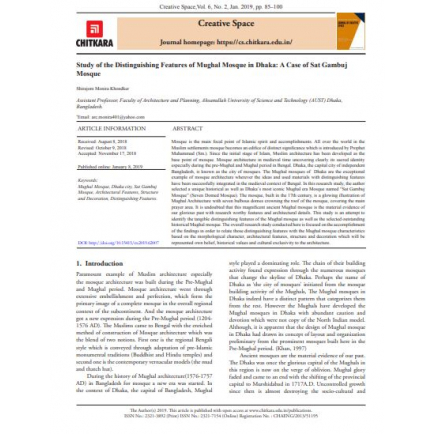
Study of the Distinguishing Features of Mughal Mosque in Dhaka: A Case of Sat Gambuj Mosque
Date Added
22/07/2022
Content Type
Documentary
Category
Researches
Link to Content
Subject Area
Mosques
Author
Shirajom Monira Khondker
Publisher Name
Creative Space,Vol. 6, No. 2
Year of Publication
2019
Description
Mosque is the main focal point of Islamic spirit and accomplishments. All over the world in the
Muslim settlements mosque becomes an edifice of distinct significance which is introduced by Prophet
Muhammad (Sm.). Since the initial stage of Islam, Muslim architecture has been developed as the
base point of mosque. Mosque architecture in medieval time uncovering clearly its sacred identity
especially during the pre-Mughal and Mughal period in Bengal. Dhaka, the capital city of independent
Bangladesh, is known as the city of mosques. The Mughal mosques of Dhaka are the exceptional
example of mosque architecture wherever the ideas and used materials with distinguishing features
have been successfully integrated in the medieval context of Bengal. In this research study, the author
selected a unique historical as well as Dhaka’s most iconic Mughal era Mosque named “Sat Gambuj
Mosque” (Seven Domed Mosque). The mosque, built in the 17th century, is a glowing illustration of
Mughal Architecture with seven bulbous domes crowning the roof of the mosque, covering the main
prayer area. It is undoubted that this magnificent ancient Mughal mosque is the material evidence of
our glorious past with research worthy features and architectural details. This study is an attempt to
identify the tangible distinguishing features of the Mughal mosque as well as the selected outstanding
historical Mughal mosque. The overall research study conducted here is focused on the accomplishment
of the findings in order to relate those distinguishing features with the Mughal mosque characteristics
based on the morphological character, architectural features, structure and decoration which will be
represented own belief, historical values and cultural exclusivity to the architecture.





